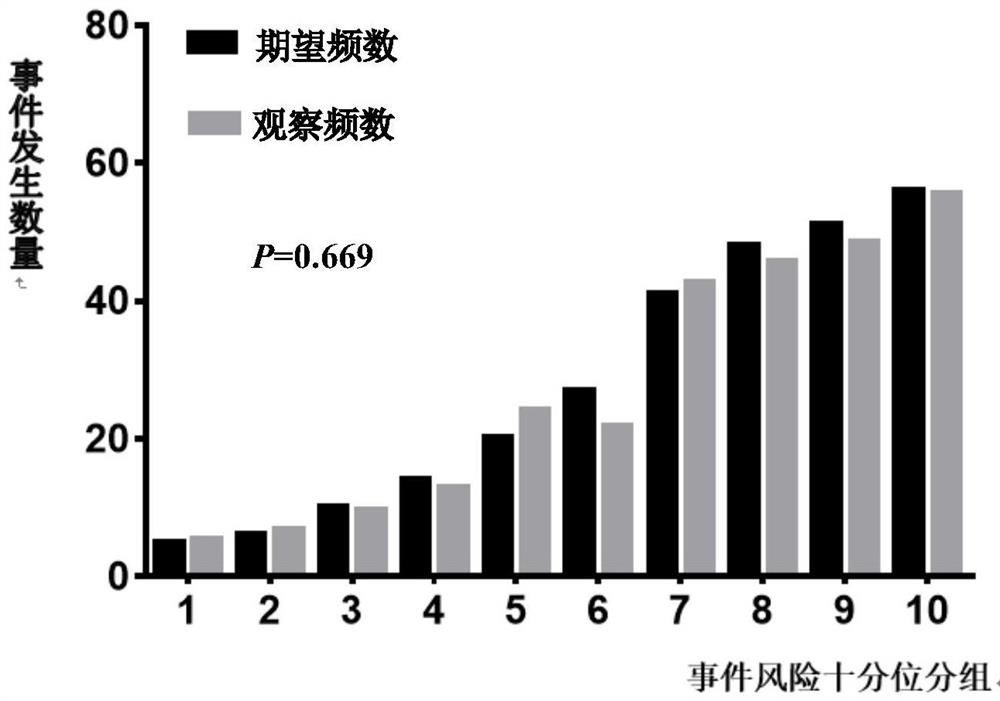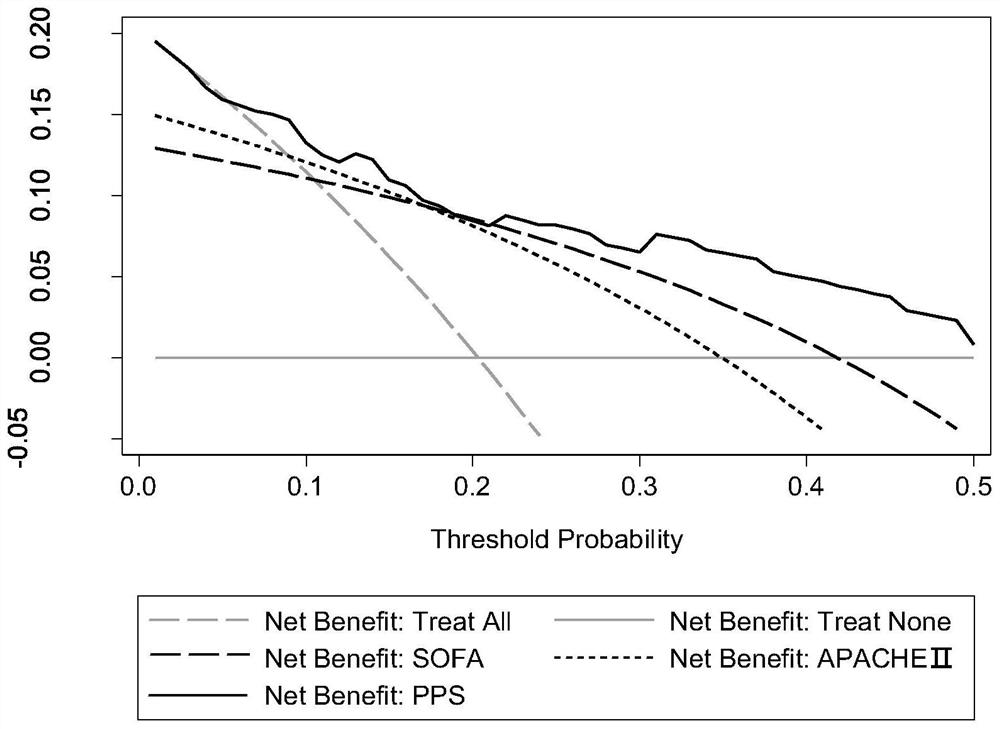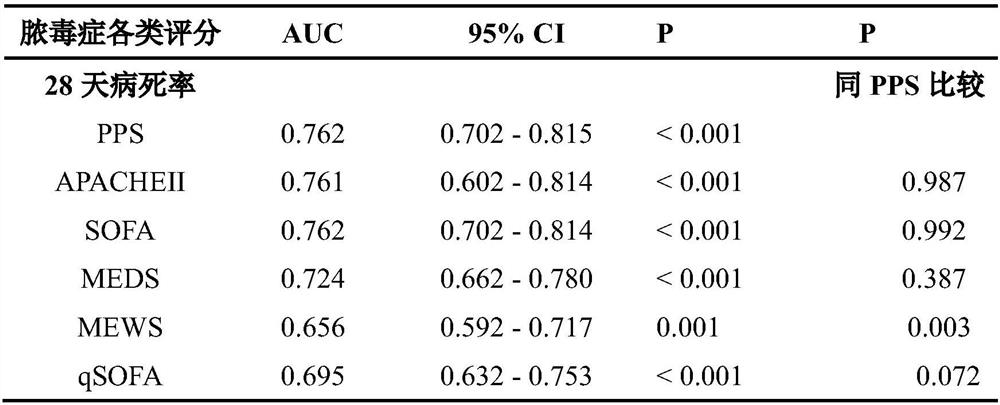Sepsis prognosis evaluation system
A prognostic evaluation and sepsis technology, applied in the field of sepsis prognostic evaluation system, can solve the problems of low sensitivity, lack of timely intervention in sepsis patients, unsatisfactory mechanical ventilation and organ function recovery, etc. Achieve high diagnostic accuracy
- Summary
- Abstract
- Description
- Claims
- Application Information
AI Technical Summary
Problems solved by technology
Method used
Image
Examples
Embodiment 1
[0048] Embodiment 1 Use of the system of the present invention
[0049] The operator only needs to input the age (years), heart rate (times / minute), respiratory rate (times / minute) and whether there is disturbance of consciousness of the sepsis patient through the input module.
[0050] Disturbance of consciousness specifically refers to: the disturbance of cognition and awareness of the surrounding environment and one's own state caused by the impairment of human high-level nerve center activity, such as one of drowsiness, lethargy, light coma, moderate coma and deep coma .
[0051] The scoring module of the system of the present invention will score according to the following criteria:
[0052] The scoring module receives information from the input module, and scores according to the PPS rule of the present invention:
[0053] 1) Age: 71 years old, 5 points;
[0054] 2) Heart rate: 123 beats / min, 3 points;
[0055] 3) Respiratory frequency: 25 breaths / minute, 6 points; ...
experiment example 1
[0080] Experimental example 1 The ability of the present invention to assess the prognosis of patients with low, medium and high risk sepsis
[0081] 1. Method
[0082] Use the prognosis evaluation system of the present invention to carry out scoring to research object, research object is divided into low-risk group (PPS: 0-6 point, n=79), middle-risk group (PPS: 7-9 point, n=79), High-risk group (PPS: 10 points and above, n=78).
[0083] The 28-day mortality rate, 7-day mortality rate, 28-day mechanical ventilation rate, and 28-day ICU admission rate of the low-risk group, medium-risk group, and high-risk group were counted.
[0084] 2. Results
[0085] The 28-day mortality rates of patients with low-risk, intermediate-risk, and high-risk sepsis were 3.8%, 13.9%, and 43.6%, respectively, and the difference was statistically significant (P<0.001); The fatality rates were 1.3%, 6.3%, and 26.9%, respectively, and the difference was statistically significant (P<0.001); the 28-...
experiment example 2
[0086] Experimental example 2 Scoring rule PPS effectiveness evaluation of the present invention
[0087] 1. Method
[0088] 1.1 Accuracy:
[0089] A goodness-of-fit test was used to compare the expected frequency of the PPS score with the observed frequency of the distribution to determine whether there was a significant difference between the two.
[0090] The basic idea of the goodness of fit test here is as follows:
[0091] 1) Group the subjects according to the PPS score, and sort the groups according to the PPS score from small to large, and divide them into 10 small Group ;
[0092] 2) Calculate the expected frequency and observed frequency in each group respectively, the expected frequency is the test group for each group The sum of the frequencies of terminal events occurring in each group, and the observation frequency is the sum of the frequencies of terminal events occurring in each group in the verification group;
[0093] 3) Calculate the chi-square ...
PUM
 Login to View More
Login to View More Abstract
Description
Claims
Application Information
 Login to View More
Login to View More - R&D
- Intellectual Property
- Life Sciences
- Materials
- Tech Scout
- Unparalleled Data Quality
- Higher Quality Content
- 60% Fewer Hallucinations
Browse by: Latest US Patents, China's latest patents, Technical Efficacy Thesaurus, Application Domain, Technology Topic, Popular Technical Reports.
© 2025 PatSnap. All rights reserved.Legal|Privacy policy|Modern Slavery Act Transparency Statement|Sitemap|About US| Contact US: help@patsnap.com



